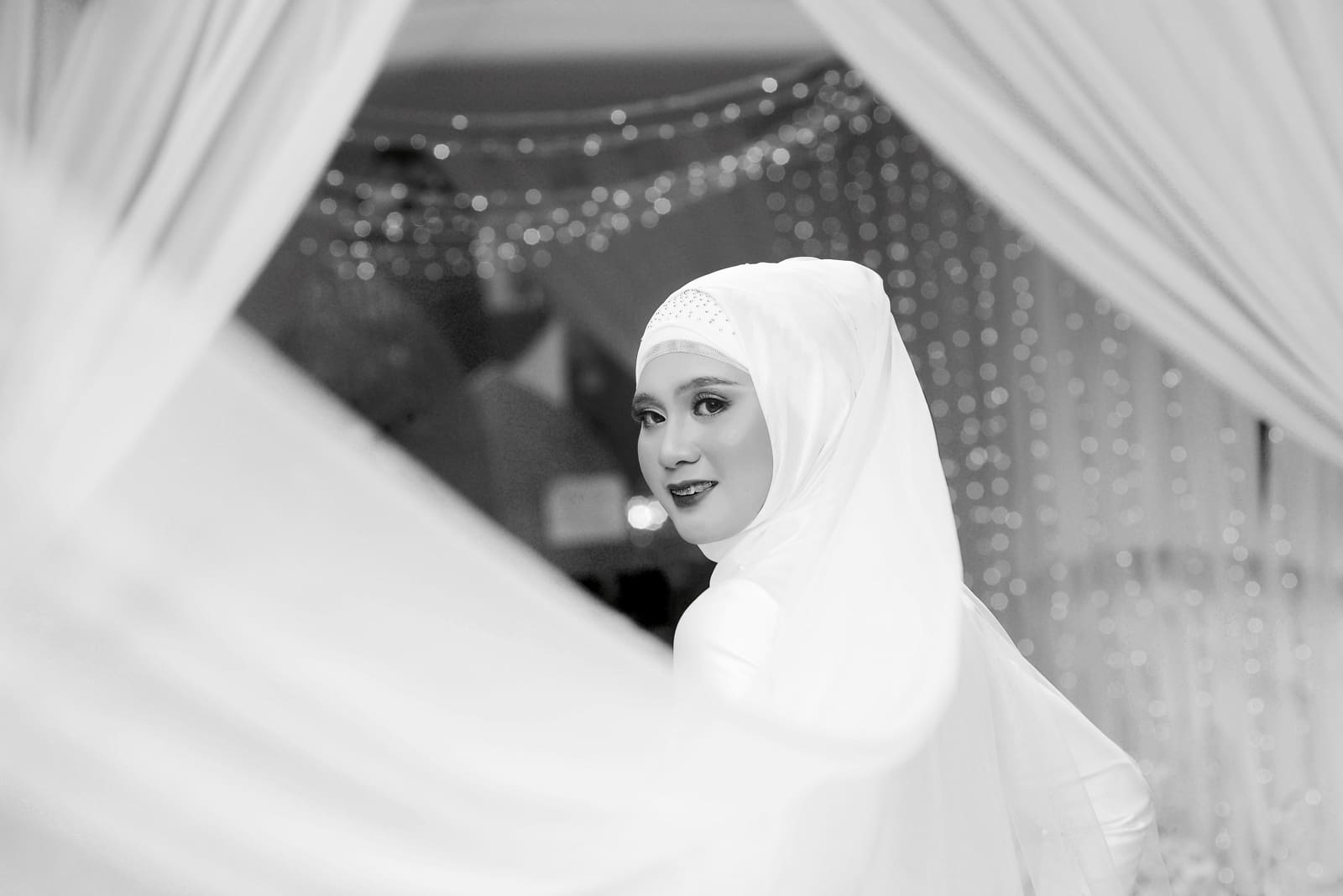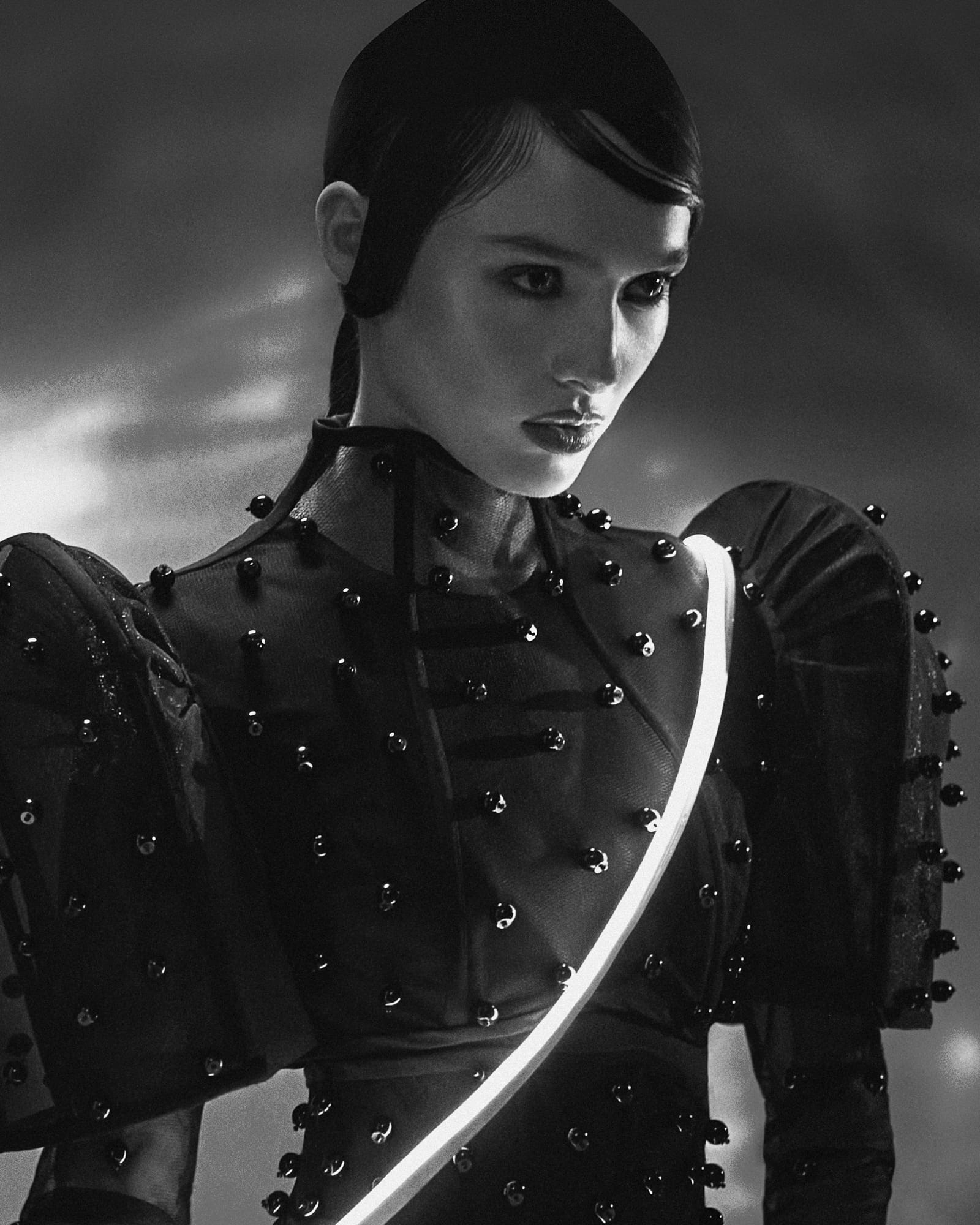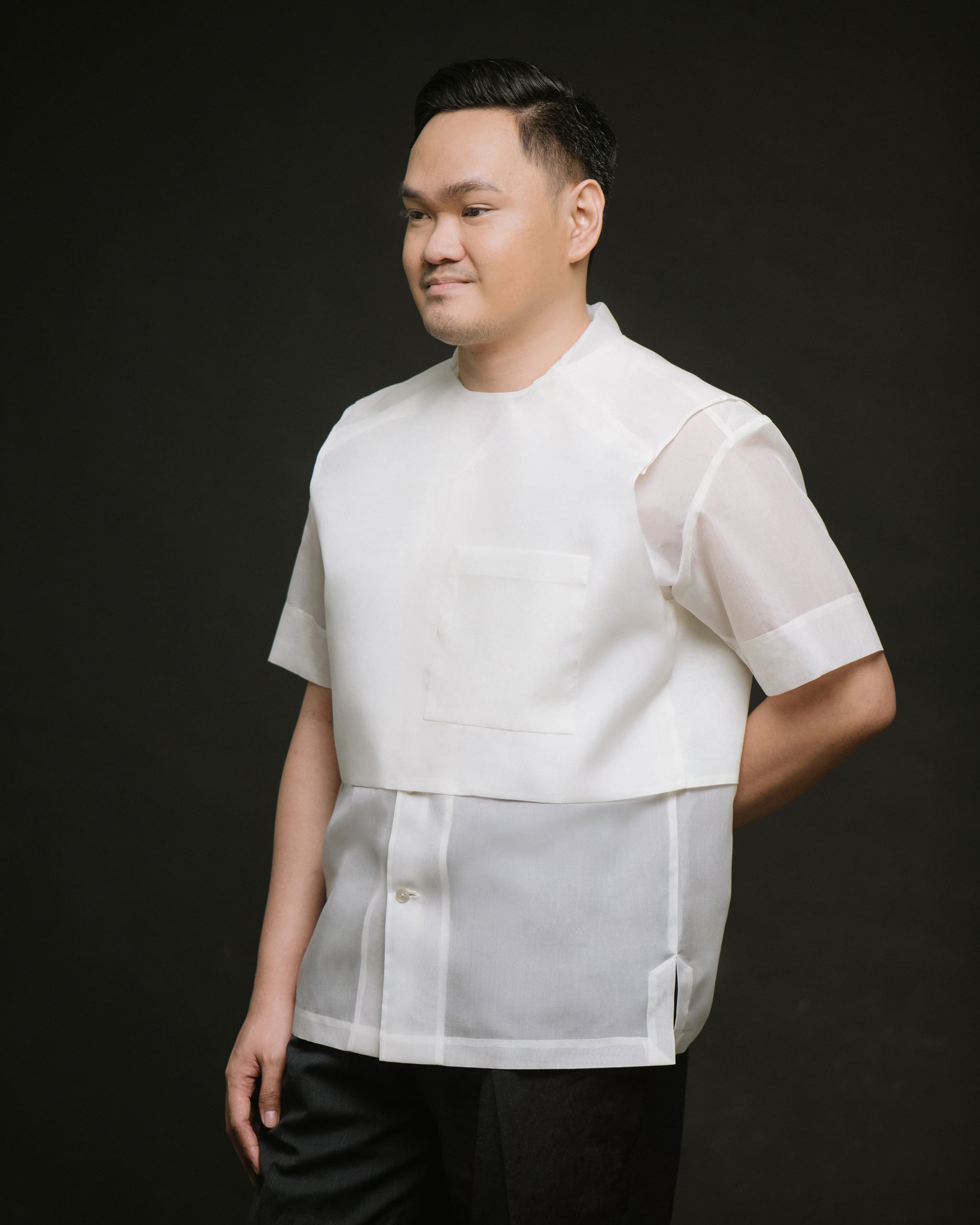Photo by Aya Cabauatan
Gino Gonzales talks to the designer on addressing the challenges that fashion presents to the needs of a Muslim woman.
Back in January 2020, TernoCon, a biennial convention and contest focused on the Philippine dress, was held at the Cultural Center of the Philippines. A volatile scenario was brewing with the impending eruption of Taal volcano and the onset of the COVID-19 pandemic. As terno-clad guests gathered at the lobby of the theater, a group of women in matching hijab and terno joined the assembly. It was for me the evening’s most quiet yet resonant gesture that dissipated the impending doom.
A few weeks earlier, I received a message from a contestant named Abdul Gaffar Dianalan to ask about the propriety of tweaking the terno in adherence to the Muslim community’s principle of modesty. As a garment of honor, I thought that there should be ways for the terno to be adapted for a Muslim woman’s needs. Abdul inserted long sleeves beneath the butterfly sleeves of the dress and closed the neckline, which was typically exposed. He used strips of langkit (a handwoven band from Marawi) to serve as accents on key areas. With four relatives wearing his ternos, it seemed like a capsule collection that paralleled his entry for the contest.
The quiet success of Abdul’s solution to a garment typically associated with lowland Christian communities was a result of three key elements working together: a real understanding and sensitivity to a community’s core values, technical skills to achieve the vision, and a modernity that drives a design solution forward.

Core Values
“I’m a Maranao, which means ‘people of the lake’,” Abdul explains. “My parents were from Marawi City in Lanao Del Sur, but I was born and raised in Iligan City in Northern Mindanao. Iligan was a small city. Back then, we only had a tiny mall. It was quaint, surrounded by beautiful waterfalls, springs, and beaches.”
The self-effacing designer also recalls Iligan as a “melting pot for people from different parts of Mindanao” characterized by a diversity of ethno-linguistic groups and religious affiliations. There was a peaceful coexistence, which he “remembers most and loves about Iligan.”
“Growing up there I never felt different just because I was Maranao or had a different religion from the rest,” he says. “People were mindful and respectful of differences. I remember how we would bring food to our neighbors during Ramadan or any other special occasion even if they didn’t necessarily celebrate it. In turn they would do the same during Christmas or invite us to their homes during fiesta.”
Abdul also credits his late mother, Monasalam Abdullah Dianalan, for his initial exposure to fashion. “She always asked a neighborhood seamstress to make her clothes,” he says. “She would sometimes ask me to fetch the seamstress, so that she can have her new stash of textiles sewn into dresses.”
The young Abdul drew his own version of superhero costumes at the back of his elementary school notebook. “At that time, I didn’t know that fashion design could be a profession,” he shares. “I knew there were seamstress or dressmakers but not fashion designers.”
However, the image of an actress wearing a white Michael Cinco gown turned out to be a pivotal moment for the impressionable youth. He googled the designer’s work and eventually discovered the likes of Alexander McQueen, whose works blew his mind. “I wished I could do that!” he says. “I wished I could create something that beautiful out of my mind.”
Without the option of going to Fashion School in Iligan, Abdul initially tried studying Biology and Nursing. “I was struggling and not doing well at school.”
When he turned 18, his family moved to Manila. “I really felt the need to make up my mind and insisted on getting to fashion school. ” Abdul recounts.
“I was extremely grateful that my mom was very supportive about it. She and my sister even accompanied me to enroll at Slim’s,” he says. “My parents even used their retirement funds for my tuition. I was supposed to take up only dress making and fashion design, but fortunately I was granted with scholarships to take the rest of the courses including bespoke tailoring.”
Aside from Abdul’s immersion into technical aspects of design, he says that “the most important learning that I got was discipline, respect for my work and more than anything, about myself. It really was a challenge to get through fashion school. A lot of self-doubt, self- discovery and not to mention financial insecurities, but I was grateful to be surrounded by people, who believed in me and took a chance on me.”

Modest Fashion
Abdul acknowledges the challenges posed by contemporary fashion in relation to the needs of Muslim women in general.
“I remember a few times, I’d go with my sisters or female cousins to find clothes for special events or just a simple occasion, and it was a real struggle,” he says. “That’s why most of the time, Muslim women must get something custom made or they buy imported garments from neighboring countries like Malaysia and Indonesia, which have predominantly Muslim populations.”
Abdul continues: “In my community, fashion is heavily influenced by our culture and faith. That is why it can be a little tricky and challenging… it’s not merely about the aesthetic or the desire to feel good in one’s garment. I have more things to consider as a designer. I must find ways around parameters, find common ground with a client, and make her look good without compromising her boundaries and beliefs.”
In 2020, Abdul was awarded the Ternocon Chief Mentor’s Medal. Inno Sotto was thoroughly impressed by the young designer’s dedication and the artistry that went into his capsule collection.
The sculptural ternos were impeccably executed in white neoprene, translucent mesh, and zippers. There was a hint of 1960s mod fashion, but it was also tempered by a contemporary sensibility, which grounded it to the present. There was a clear emphasis on form, which didn’t necessarily contour the body. His choice of materials also lent an athleticism on an otherwise staid national dress.
And here is where the designer’s gift at dealing with the conundrum is palpable: recognizing and respecting tradition while infusing it with just the right dose of modernity. Abdul describes his work as “classic with a little bit of quirkiness.” It is a delicately balanced equation that has given him commissions from like-minded individuals—within the Muslim community and beyond.
